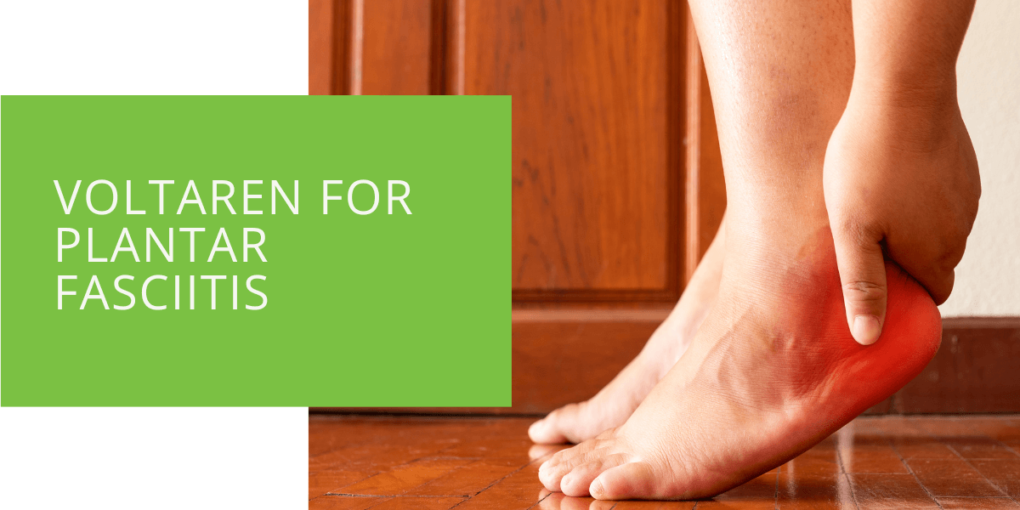Voltaren for Plantar Fasciitis
Plantar fasciitis can be a debilitating condition characterized by heel pain and discomfort. If you're suffering from this condition, finding effective pain relief methods is crucial to regain mobility and quality of life. One potential treatment option that has gained popularity is Voltaren. In this article, we will explore how Voltaren, a topical gel containing the active ingredient diclofenac, can help relieve the symptoms of plantar fasciitis and provide much-needed relief.
Understanding Plantar Fasciitis
Plantar fasciitis is a common foot condition that occurs when the plantar fascia, a thick band of tissue that runs along the bottom of the foot, becomes inflamed. This inflammation often leads to intense heel pain, especially during the first steps in the morning or after prolonged rest periods. Factors such as excessive foot pronation, high-impact activities, inadequate footwear, and tight calf muscles can contribute to the development of plantar fasciitis.
Treatment Approaches for Plantar Fasciitis
Conservative Methods
In most cases, plantar fasciitis can be effectively managed with conservative treatments. These include stretching exercises, rest, ice therapy, and wearing supportive footwear. Physical therapy and orthotic devices, such as shoe inserts or night splints, are common approaches to alleviate symptoms and promote healing.
Medications for Plantar Fasciitis
Medications can be crucial in managing the pain and inflammation associated with plantar fasciitis. One commonly used class of medications is nonsteroidal anti-inflammatory drugs (NSAIDs). Voltaren, a brand name for diclofenac, falls into this category and is available as a topical gel and oral tablet.
The Role of Voltaren in Plantar Fasciitis Management
Voltaren gel is a topical NSAID that can be directly applied to the affected area. It reduces inflammation and alleviates pain, providing targeted relief to the plantar fascia. The gel is easily absorbed through the skin, reaching the underlying tissues to combat the inflammation causing the heel pain. Additionally, Voltaren tablets can be taken orally to provide systemic anti-inflammatory effects.
When using Voltaren gel, it's important to follow the instructions provided by your healthcare professional. Applying a thin layer to the affected area and gently massaging it into the skin can help optimize its effectiveness. It's advisable to avoid contact with open wounds, mucous membranes, and eyes. As with any medication, it's essential to consult a healthcare professional before starting Voltaren to ensure it's suitable for you.

Using Voltaren Safely
While Voltaren can provide effective pain relief, it's important to use it safely and responsibly. Always consult with a healthcare professional, such as a podiatrist, to determine the appropriate dosage and duration of treatment. They will consider your circumstances and medical history to ensure it's the right option.
It's worth noting that, like any medication, Voltaren may have potential side effects. These can include skin irritation or rash at the application site. Contact your healthcare professional promptly if you experience any adverse reactions or concerns. They can provide guidance and make adjustments to your treatment plan if necessary.
Combining Voltaren with Other Treatments
Combining Voltaren with other conservative treatments can often enhance its effectiveness in managing plantar fasciitis. Physical therapy exercises and stretches can help strengthen the supporting muscles and reduce strain on the plantar fascia. Night splints, which hold the foot in a dorsiflexed position while sleeping, can also aid in relieving morning pain and promoting healing. Additionally, shockwave therapy, which utilizes high-energy sound waves to stimulate tissue regeneration, has shown promise in treating plantar fasciitis.
By working closely with a podiatrist or healthcare professional, you can explore the combination of Voltaren gel or tablets with these complementary treatments. They can provide personalized guidance based on your condition and needs, ensuring an integrated approach to your plantar fasciitis management.
Conclusion
Voltaren, with its active ingredient diclofenac, provides a promising option for managing the pain and inflammation associated with plantar fasciitis. Whether used as a topical gel or taken orally, Voltaren can help alleviate symptoms and improve your overall comfort. However, consulting with a healthcare professional is crucial to ensure safe and appropriate usage. Remember, a comprehensive treatment plan that includes Voltaren and other conservative measures can increase your chances of finding relief and getting back on your feet. Don't let plantar fasciitis hinder your quality of life—seek professional guidance and take steps toward a pain-free future.
FAQ
Can you use Voltarol for plantar fasciitis?
Voltarol is another brand name for diclofenac, an NSAID commonly used for pain relief and inflammation reduction. Both Voltaren and Voltarol contain diclofenac and can be used for plantar fasciitis. However, it's important to follow the instructions provided by your healthcare professional and use the medication as directed.
Is diclofenac good for plantar fasciitis?
Diclofenac, the active ingredient in Voltaren and Voltarol, has effectively managed the pain and inflammation associated with plantar fasciitis. It is a nonsteroidal anti-inflammatory drug (NSAID) that helps reduce swelling, relieve pain, and improve overall comfort. However, individual medication responses may vary, so it's important to consult with a healthcare professional to determine if diclofenac is a suitable treatment option for your specific condition.
How to apply Voltaren for plantar fasciitis?
When using Voltaren gel for plantar fasciitis, follow these general guidelines:
- Start with clean, dry skin on the affected area.
- Squeeze a small amount of gel onto your hand.
- Gently massage the gel into the skin over the painful area of the foot, covering the plantar fascia.
- Repeat the application as directed by your healthcare professional, usually up to three or four times a day.
- Wash your hands thoroughly after each application unless your hands are in the affected area.

